
A downlead clamp is a component used in electrical installations to secure and support cables or wires. Its main function is to guide the cables as they transition from the main transmission line down to a lower point. This helps prevent excessive movement, vibration or abrasion that could damage delicate fibers. It is crucial to balance the initial investment with the long-term benefits. This includes factors such as durability, reliability and compliance with safety standards. When considering the cost of the downlead clamps, it is advisable to assess the specific needs of the electrical installation. This helps to make an informed decision that aligns with budget constraints. Factors like material, size and load capacity may influence the costs of the downlead clamps. Common types of the clamps include bolted, wedged, compression and suspension downlead clamps.
Components of downlead clamp
Downlead clamps have various components that contribute to the main function on electrical installations. The available components vary depending on they type and design of the clamps. The following are the essential components of the downlead clamp.
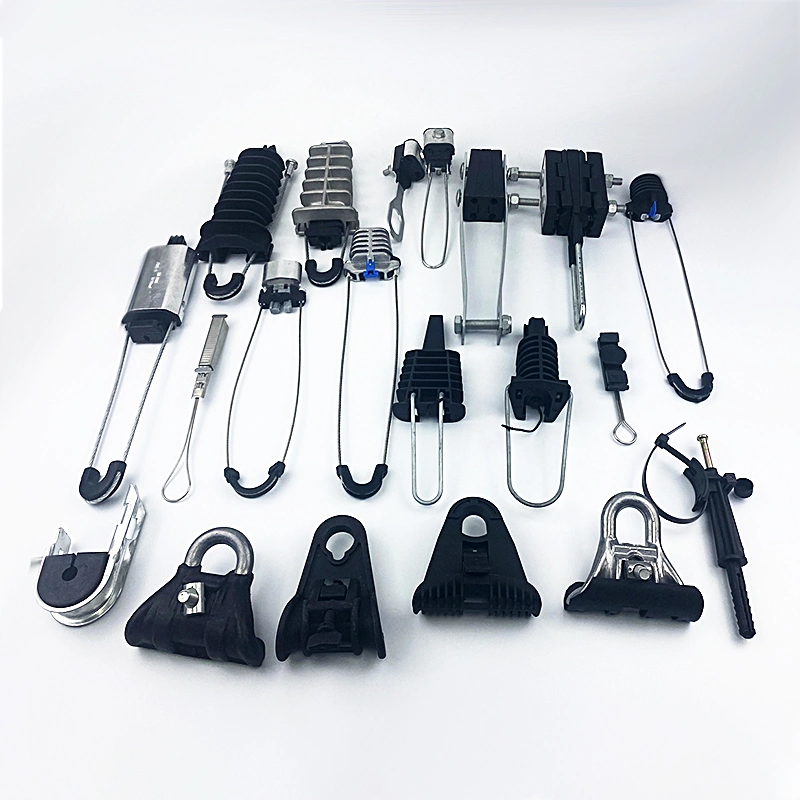
- Body – this is the main structural component of the downlead clamp shaped like a U or C. this provides the frame for securing the cable.
- Steel bracket – this is the bottom part of the clamp used to ensure the cables lock within. It helps to prevent cables from coming out after installations.
- Bolts or screws – these are fasteners used to secure the downlead clamp to a support structure or mounting point. These fasteners help to ensure the stability and reliability of the clamp.
- Clamping mechanism – this handles holding the cable in place. This includes adjustable clamps, grips or features designed to accommodate different cable sizes.
- Adjustment mechanism – this allows for fine-tuning the grip on the cable. This is especially when dealing with different sizes.
- Rubber material – this section helps to prevent cables from scratches or abrasions from friction.
- Base – this is the part that comes into contact with the surface to which the clamp attaches. It can be a flat base designed for specific applications.
- Attachment hardware – this includes extra hardware such as nuts and washers used with bolts and screws. It helps to secure the downlead clamp to its mounting point.
- Finish – there may be protective coatings applied to enhance corrosion resistance and durability.
Why use downlead clamp?
The clamps play an important role in electrical installations providing several functions. These functions then contribute to safety, reliability and efficiency of the system. Downlead clamps help manage cables, prevent damage and ensure compliance with industry standards. Additionally, it is advisable to consult with industry professionals for guidance on the best clamps. Importance of the clamps are as discussed below.
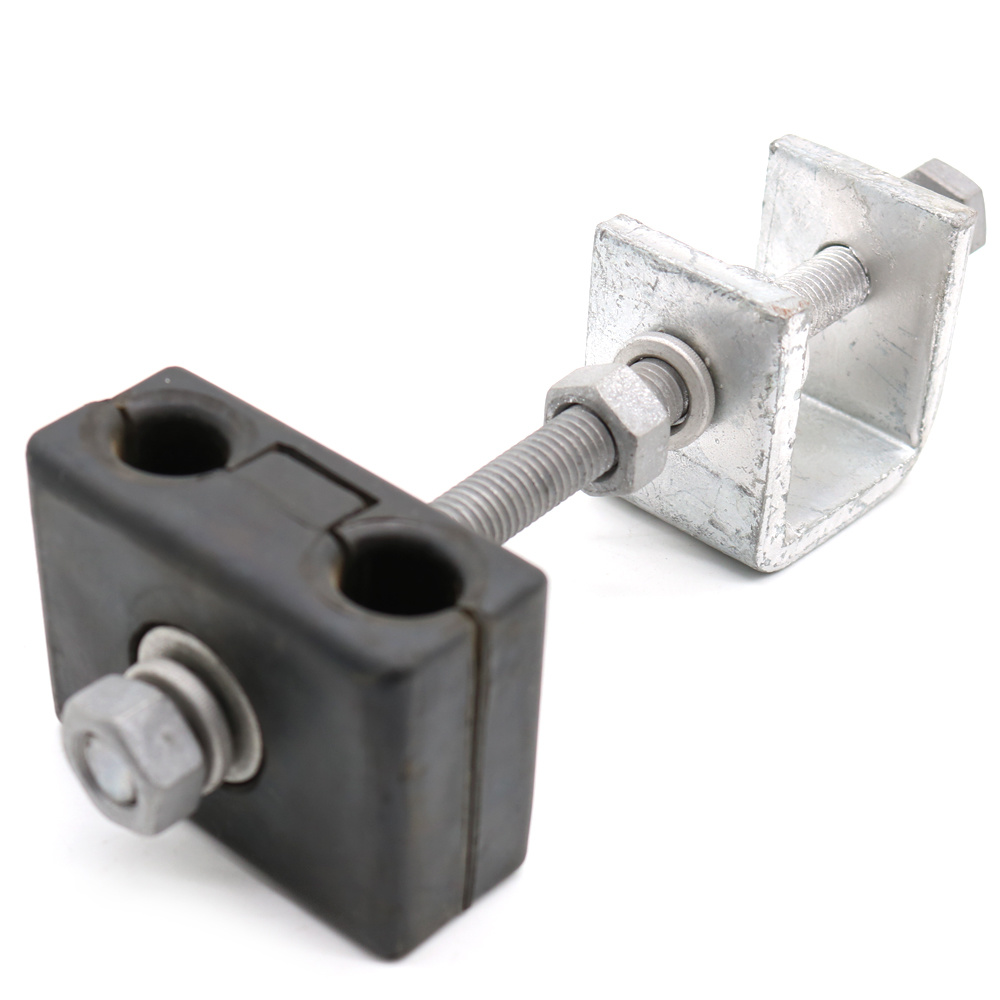
- Cable support – the clamps anchor cables to prevent them from sagging, twisting or moving. This also ensures proper cable management and helps maintain the integrity of the electrical system.
- Protection against electrical hazards – the clamps include various features that provide electrical insulation. These features include insulating materials or coatings. They protect against electrical hazards like short circuits and unintended contact.
- Cable separation – downlead clamps help maintain proper separation between the cables. This ensures optimal performance of the electrical system.
- Cable movement prevention – the clamps prevent cables from moving during installation. This makes it easier for installers to work with the cables and ensure proper positioning.
- Cable damage prevention – the clamps hold the cables in place to prevent physical damage to the cables. This is important in environments exposed to vibrations, wind and other external factors.
- Cable strain prevention – securing the cables with the clamps prevents excessive strain on the cables. Strain relief is important to prevent cable damage and maintain the structural systems longevity.
- Durability – the clamps have designs to withstand harsh weather conditions. This is including exposure to moisture and UV radiation. This ensures the clamps maintain their functionality for long periods.
- Reliability – proper installation contributes to the long-term reliability of the system. This is by preventing cable damage, reducing wear and tear and ensuring consistent cable performance.
Cost considerations and comparisons for downlead clamp
Costs for downlead clamps vary depending on various factors such as location, material and sizes. There are various vendors and suppliers who also offer different prices. It is advisable to choose a supplier you can trust first. Additionally, it is advisable to look beyond the initial prices and consider other factors. These include total lifecycle costs, maintenance requirements and the performance of the downlead clamp. normal price ranges of the downlead clamp range between $0.50 to $9.00. the following are the various factors that influence the costs for downlead clamps.
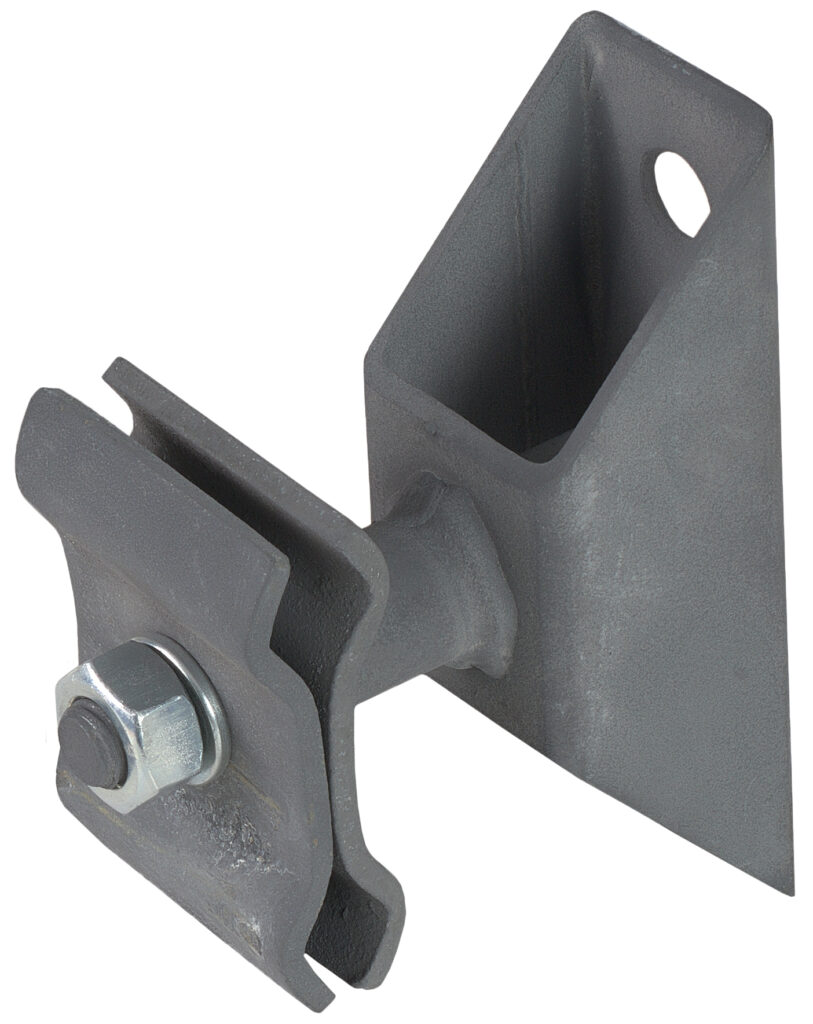
- Manufacturing process – check the precision in design and use of advanced technologies which impact the cost.
- Size and load capacity – larger clamps designed to support heavier cables may be more expensive than smaller ones.
- Quality and packaging – large quantities buy may result in bulk discounts or reduced unit costs.
- Installation costs – consider the ease of installation which results in labor costs during installation.
- Material cost – check the material used in the construction of the downlead clamp. common materials include galvanized steel, stainless steel, aluminum or plastic. Stainless steel is more expensive than galvanized steel or aluminum.
- Corrosion resistance – check the protective measures which contributes to increased costs. Corrosion resistance ensures durability especially in outdoor installations.
- Brand reputation – different brands offer downlead clamps that reflect their commitment to quality.
- Distribution and logistics – consider factors such as transportation and storage. These factors contribute to the cost of the downlead clamps.
Challenges facing use of downlead clamp
Downlead clamps help in the installations of electrical installations and they may face various challenges. These challenges influence their effectiveness, safety and reliability of the electrical system. It is thus important to address these challenges which need careful consideration during the selection, installation and maintenance of the downlead clamps. Additionally, it is best to follow industry best practices and adhering to manufacturer guidelines for effectiveness. The following are the various challenges facing use of downlead clamps.
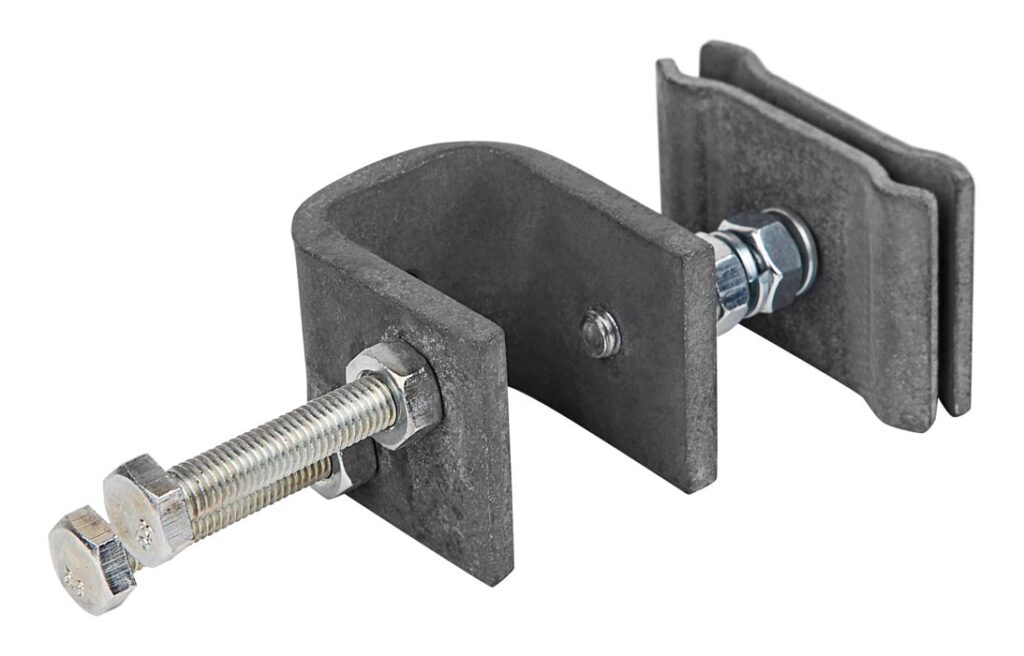
- Variability in size – finding the downlead clamps that accommodate various diameters and types of cable can be a challenge. The right sizes of the clamps increase the cable support.
- Galvanic corrosion – downlead clamps should be from materials that are compatible with the support structure. This helps to prevent galvanic corrosion which may compromise the clamps over time.
- Temperature extremes – hot or cold temperatures can affect the material properties of downlead clamps. This may lead to changes in strength, flexibility or other mechanical characteristics.
- Cable support – downlead clamps should be appropriately sized or designed for cables they are supporting. Otherwise, it can result in sagging, damage or excessive strain on the cables.
- Corrosion exposure – exposure to conditions such as moisture and UV radiation can damage downlead clamps. It may also lead to compromised integrity of the clamps and reduced lifespan.
- Improper installation – this may involve issues such as inadequate tightening, incorrect positioning or failure to follow guidelines. This leads to instability and potential hazards.
- Mechanical stress – this includes vibrations from machinery or environmental factors. Some of the clamps may loosen over time which may impact their ability to support cables.
- Compatibility with cable insulation – the material of downlead clamps may not be compatible with certain types of cable insulation. This results in damage to the insulation or compromise to the electrical integrity.
- Maintenance challenges – regular maintenance and inspection for the clamps ensure their continued effectiveness.
Accessories used with downlead clamps
There are several components used with downlead clamps to enhance performance and improve cable management. They also help to ensure the effectiveness of electrical installations. Also, it is essential to select accessories that are compatible with the specific downlead clamps. The following are the components used with downlead clamps.
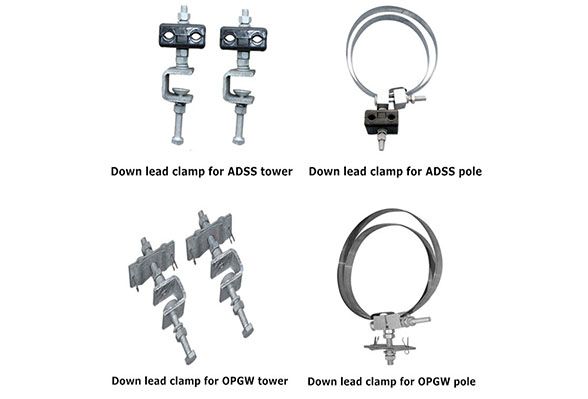
- Threaded bolts and rods – these components help to secure downlead clamps to supporting structures. They help provide a stable and secure attachment.
- Nuts and washers – washers help to distribute the load while nuts ensure a tight and secure connection.
- Spacer bars – these help to maintain proper spacing between cables and help prevent cable entanglement.
- Support brackets – these provide extra structural support for downlead clamps in areas where a more robust mounting solution is necessary.
- Conduit and conduit fittings – these may work with downlead clamps to protect the cables from environmental factors, mechanical damage and electromagnetic interference.
- Insulation covers – insulation covers provide extra electrical insulation reducing the risk of electrical hazards and enhancing safety.
- Mounting plates – these serve as the base for downlead clamps providing a flat and stable surface for attachment to support structures.
Frequently asked questions
The clamps help to secure and support cables in electrical installations. They prevent sagging, provide cable management and contribute to the safety and reliability of the system.
Threaded rods and bolts work to securely attach downlead clamps to supporting structures of mounting points. They provide stability and prevent the clamps from loosening or shifting over time.
The factors include material type, corrosion resistance, certifications, size, ease of installation and long-term durability.